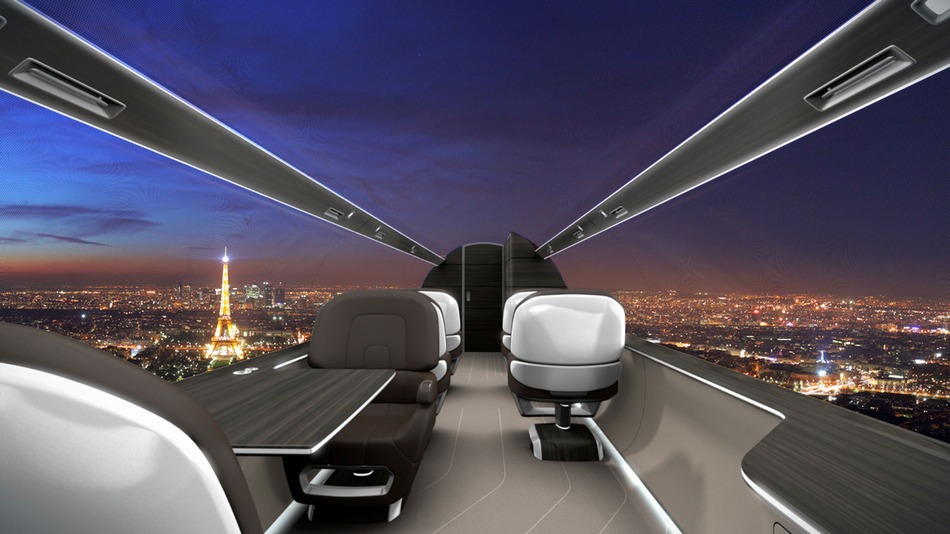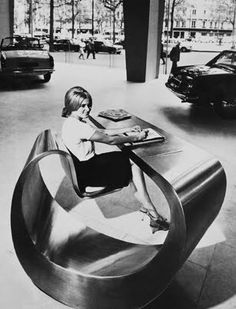Windowless planes, something maybe just a decade away, doesn’t refer to aircraft completely closed but the opposite. In an effort to reduce plane weight, the windows would be gone from the fuselage and lightweight screens on the inside would show what’s on the exterior, making it feel like a house of glass. Of course, some of us would rather not look. From Shane Hickey at the Guardian:
“It is a glimpse into the future that will inspire wonder in some people but perhaps strike terror into the heart of the nervous flyer: a windowless plane that nonetheless allows passengers to see what’s going on outside, as well as checking their email and surfing the net.
In a vision of what the next generation of commercial aircraft could look like in little more than a decade, windows would be replaced by full-length screens allowing constant views of the world outside. Passengers would be able to switch the view on and off according to their preference, identify prominent sights by tapping the screen or even just surf the internet.
The early-stage concept for the windowless plane, based on technology used in mobile phones and televisions, hails from the Centre for Process Innovation (CPI), an organisation with sites across north-east England that works with companies to develop new products. It imagines how large, hi-definition, ultra thin and lightweight displays could form the inside of the fuselage, displaying images of the exterior from cameras mounted on the plane’s exterior.
But the real ambition echoes a constant quest in the aviation industry: how to reduce weight, which would cut fuel consumption, thereby bringing down fares. According to the CPI, for every 1% reduction in the weight of an aircraft, there is a saving in fuel of 0.75%.”



